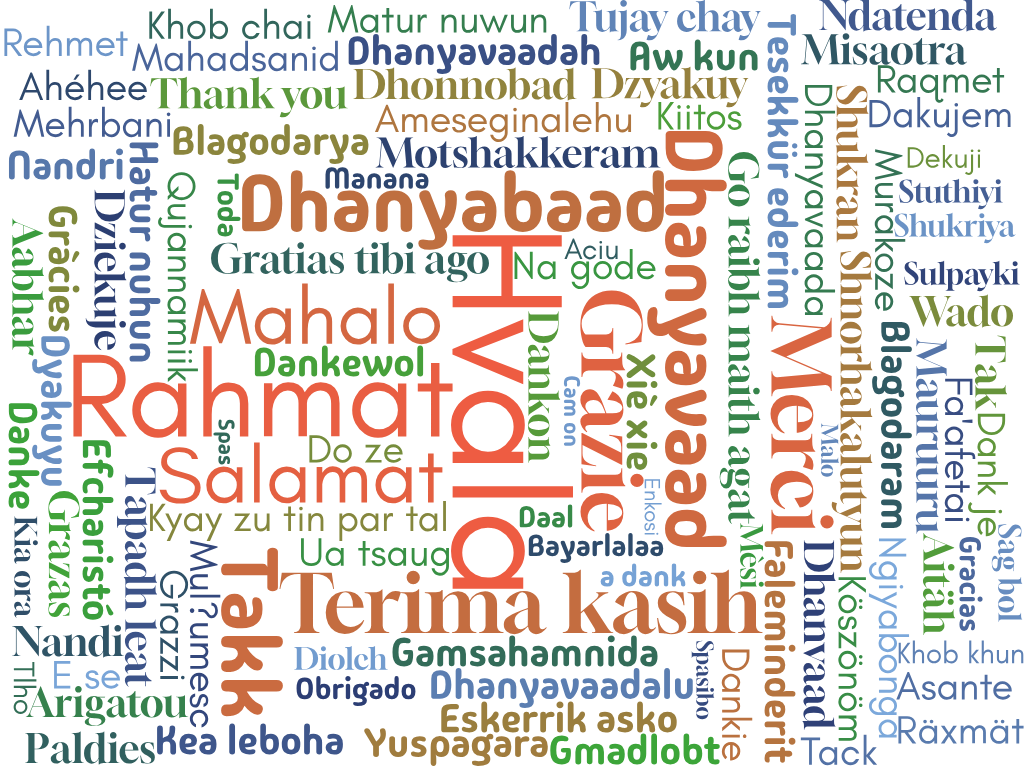|
|
| Laurens County – Language Spoken at Home | ||||||||||||||
|
 Understanding the languages spoken at home is crucial for a variety of reasons, ranging from cultural appreciation and preservation to economic development and political stability. Language is not just a tool for communication; it is a carrier of culture, history, and identity. Here are several key reasons why understanding the linguistic landscape of a region is important:
Understanding the languages spoken at home is crucial for a variety of reasons, ranging from cultural appreciation and preservation to economic development and political stability. Language is not just a tool for communication; it is a carrier of culture, history, and identity. Here are several key reasons why understanding the linguistic landscape of a region is important:
In conclusion, understanding the languages spoken at home is fundamental for a multitude of reasons. It enriches our appreciation of cultural diversity, facilitates effective communication, drives economic growth, supports education, promotes social integration, improves healthcare delivery, enhances tourism experiences, and advances academic research. As the world becomes increasingly interconnected, the importance of linguistic understanding will only continue to grow. A diversification score measures the diversity of languages in the county. As the value appoaches 100, language diversity decreases and therefore increasing the risk of a lack of cultural diversity. The language diversification score for this county is: 93.53 Most common language is: English |
||||||||||||||
| Description | Employed 16 and Over |
English | Spanish or Spanish Creole | French or French Creole | German | Russian, Polish, or Other Slavic Languages | Other Indo-European Languages | Chinese | Korean | Vietnamese | Other Asian Languages | Tagalog and Other Pacific Languages | Arabic | Other Languages |
" | ||||||||||||||
| Laurens County | 47,951 | 46,359 | 1,130 | 92 | 12 | 27 | 210 | 28 | 33 | 0 | 35 | 21 | 0 | 4 |
| Georgia (in 000's) | 10,675 | 9,073 | 896 | 62 | 31 | 33 | 166 | 61 | 54 | 60 | 93 | 16 | 22 | 107 |
| National (in 000's) | 324,751 | 253,391 | 43,630 | 2,169 | 1,535 | 2,232 | 6,390 | 3,620 | 1,124 | 1,597 | 3,355 | 1,800 | 1,416 | 2,491 |
| Emanuel County | 22,129 | 21,055 | 795 | 17 | 8 | 0 | 190 | 0 | 0 | 0 | 9 | 4 | 27 | 24 |
| Dodge County | 19,006 | 18,613 | 350 | 15 | 10 | 1 | 0 | 0 | 0 | 0 | 4 | 0 | 10 | 3 |
| Bleckley County | 12,275 | 12,015 | 183 | 6 | 0 | 0 | 0 | 31 | 0 | 8 | 20 | 3 | 0 | 9 |
| Wilkinson County | 8,459 | 8,329 | 114 | 8 | 0 | 0 | 0 | 0 | 0 | 2 | 6 | 0 | 0 | 0 |
| Johnson County | 8,827 | 8,660 | 153 | 0 | 0 | 0 | 14 | 0 | 0 | 0 | 0 | 0 | 0 | 0 |
| Wheeler County | 7,058 | 6,777 | 241 | 5 | 0 | 0 | 6 | 0 | 0 | 0 | 0 | 0 | 0 | 29 |
| Twiggs County | 7,682 | 7,482 | 72 | 39 | 5 | 0 | 49 | 35 | 0 | 0 | 0 | 0 | 0 | 0 |
| Treutlen County | 6,219 | 6,149 | 20 | 0 | 0 | 0 | 0 | 0 | 0 | 0 | 0 | 0 | 0 | 50 |
| Per Cent to Total Employed 16 and Over | Diversity Index | |||||||||||||
| Laurens County | 93.53 | 96.68 | 2.36 | 0.19 | 0.03 | 0.06 | 0.44 | 0.06 | 0.07 | 0.00 | 0.07 | 0.04 | 0.00 | 0.01 |
| Georgia | 73.01 | 85.00 | 8.40 | 0.58 | 0.29 | 0.31 | 1.56 | 0.57 | 0.51 | 0.56 | 0.87 | 0.15 | 0.20 | 1.01 |
| National | 62.77 | 78.03 | 13.43 | 0.67 | 0.47 | 0.69 | 1.97 | 1.11 | 0.35 | 0.49 | 1.03 | 0.55 | 0.44 | 0.77 |
| Emanuel County | 90.67 | 95.15 | 3.59 | 0.08 | 0.04 | 0.00 | 0.86 | 0.00 | 0.00 | 0.00 | 0.04 | 0.02 | 0.12 | 0.11 |
| Dodge County | 95.94 | 97.93 | 1.84 | 0.08 | 0.05 | 0.01 | 0.00 | 0.00 | 0.00 | 0.00 | 0.02 | 0.00 | 0.05 | 0.02 |
| Bleckley County | 95.83 | 97.88 | 1.49 | 0.05 | 0.00 | 0.00 | 0.00 | 0.25 | 0.00 | 0.07 | 0.16 | 0.02 | 0.00 | 0.07 |
| Wilkinson County | 96.97 | 98.46 | 1.35 | 0.09 | 0.00 | 0.00 | 0.00 | 0.00 | 0.00 | 0.02 | 0.07 | 0.00 | 0.00 | 0.00 |
| Johnson County | 96.28 | 98.11 | 1.73 | 0.00 | 0.00 | 0.00 | 0.16 | 0.00 | 0.00 | 0.00 | 0.00 | 0.00 | 0.00 | 0.00 |
| Wheeler County | 92.31 | 96.02 | 3.41 | 0.07 | 0.00 | 0.00 | 0.09 | 0.00 | 0.00 | 0.00 | 0.00 | 0.00 | 0.00 | 0.41 |
| Twiggs County | 94.88 | 97.40 | 0.94 | 0.51 | 0.07 | 0.00 | 0.64 | 0.46 | 0.00 | 0.00 | 0.00 | 0.00 | 0.00 | 0.00 |
| Treutlen County | 97.77 | 98.87 | 0.32 | 0.00 | 0.00 | 0.00 | 0.00 | 0.00 | 0.00 | 0.00 | 0.00 | 0.00 | 0.00 | 0.80 |
| Comparisons to State Norms | % to Total >= 150% | % to Total < 50% | ||||||||||||
| Laurens County | 113.74 | 28.07 | 32.91 | 8.54 | 18.27 | 28.16 | 10.27 | 13.59 | 0.00 | 8.34 | 29.50 | 0.00 | 0.83 | |
| Georgia | 100.00 | 100.00 | 100.00 | 100.00 | 100.00 | 100.00 | 100.00 | 100.00 | 100.00 | 100.00 | 100.00 | 100.00 | 100.00 | |
| National | 91.80 | 160.00 | 114.54 | 161.33 | 223.04 | 126.52 | 196.08 | 68.39 | 88.04 | 118.08 | 373.35 | 216.37 | 76.18 | |
| Emanuel County | 111.94 | 42.79 | 13.18 | 12.34 | 0.00 | 55.21 | 0.00 | 0.00 | 0.00 | 4.65 | 12.18 | 60.54 | 10.77 | |
| Dodge County | 115.22 | 21.93 | 13.54 | 17.95 | 1.71 | 0.00 | 0.00 | 0.00 | 0.00 | 2.41 | 0.00 | 26.11 | 1.57 | |
| Bleckley County | 115.16 | 17.76 | 8.38 | 0.00 | 0.00 | 0.00 | 44.42 | 0.00 | 11.67 | 18.62 | 16.46 | 0.00 | 7.28 | |
| Wilkinson County | 115.84 | 16.05 | 16.22 | 0.00 | 0.00 | 0.00 | 0.00 | 0.00 | 4.23 | 8.11 | 0.00 | 0.00 | 0.00 | |
| Johnson County | 115.42 | 20.64 | 0.00 | 0.00 | 0.00 | 10.20 | 0.00 | 0.00 | 0.00 | 0.00 | 0.00 | 0.00 | 0.00 | |
| Wheeler County | 112.96 | 40.67 | 12.15 | 0.00 | 0.00 | 5.47 | 0.00 | 0.00 | 0.00 | 0.00 | 0.00 | 0.00 | 40.81 | |
| Twiggs County | 114.59 | 11.16 | 87.08 | 22.21 | 0.00 | 41.02 | 80.13 | 0.00 | 0.00 | 0.00 | 0.00 | 0.00 | 0.00 | |
| Treutlen County | 116.32 | 3.83 | 0.00 | 0.00 | 0.00 | 0.00 | 0.00 | 0.00 | 0.00 | 0.00 | 0.00 | 0.00 | 79.85 | |
| Comparisons to National Norms | % to Total >= 150% | % to Total < 50% | ||||||||||||
| Laurens County | 123.91 | 17.54 | 28.73 | 5.29 | 8.19 | 22.26 | 5.24 | 19.88 | 0.00 | 7.07 | 7.90 | 0.00 | 1.09 | |
| Georgia | 108.94 | 62.50 | 87.30 | 61.98 | 44.84 | 79.04 | 51.00 | 146.22 | 113.59 | 84.69 | 26.78 | 46.22 | 131.26 | |
| National | 100.00 | 100.00 | 100.00 | 100.00 | 100.00 | 100.00 | 100.00 | 100.00 | 100.00 | 100.00 | 100.00 | 100.00 | 100.00 | |
| Emanuel County | 121.94 | 26.74 | 11.50 | 7.65 | 0.00 | 43.64 | 0.00 | 0.00 | 0.00 | 3.94 | 3.26 | 27.98 | 14.14 | |
| Dodge County | 125.51 | 13.71 | 11.82 | 11.13 | 0.77 | 0.00 | 0.00 | 0.00 | 0.00 | 2.04 | 0.00 | 12.07 | 2.06 | |
| Bleckley County | 125.45 | 11.10 | 7.32 | 0.00 | 0.00 | 0.00 | 22.65 | 0.00 | 13.25 | 15.77 | 4.41 | 0.00 | 9.56 | |
| Wilkinson County | 126.19 | 10.03 | 14.16 | 0.00 | 0.00 | 0.00 | 0.00 | 0.00 | 4.81 | 6.87 | 0.00 | 0.00 | 0.00 | |
| Johnson County | 125.74 | 12.90 | 0.00 | 0.00 | 0.00 | 8.06 | 0.00 | 0.00 | 0.00 | 0.00 | 0.00 | 0.00 | 0.00 | |
| Wheeler County | 123.06 | 25.42 | 10.61 | 0.00 | 0.00 | 4.32 | 0.00 | 0.00 | 0.00 | 0.00 | 0.00 | 0.00 | 53.56 | |
| Twiggs County | 124.83 | 6.98 | 76.02 | 13.77 | 0.00 | 32.42 | 40.87 | 0.00 | 0.00 | 0.00 | 0.00 | 0.00 | 0.00 | |
| Treutlen County | 126.72 | 2.39 | 0.00 | 0.00 | 0.00 | 0.00 | 0.00 | 0.00 | 0.00 | 0.00 | 0.00 | 0.00 | 104.81 | |
Sources: STI: PopStats, Circa April 2025


